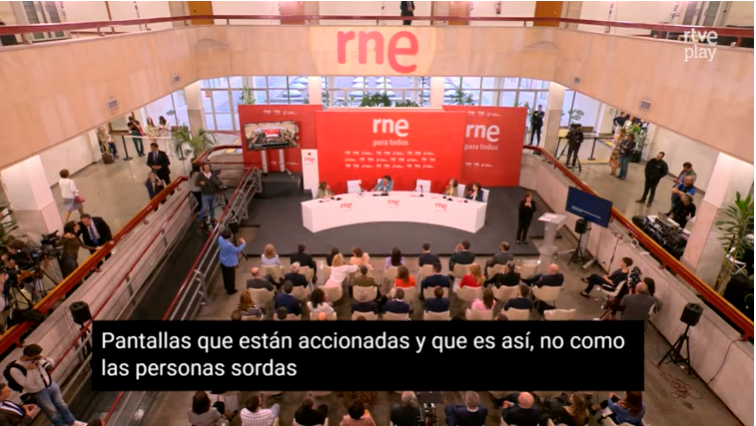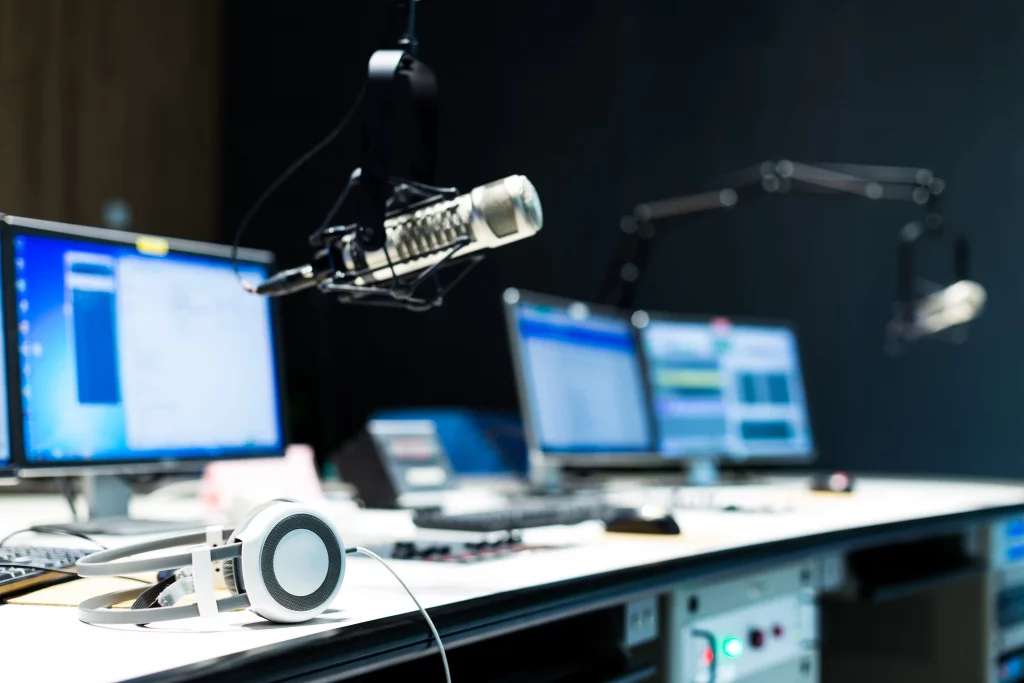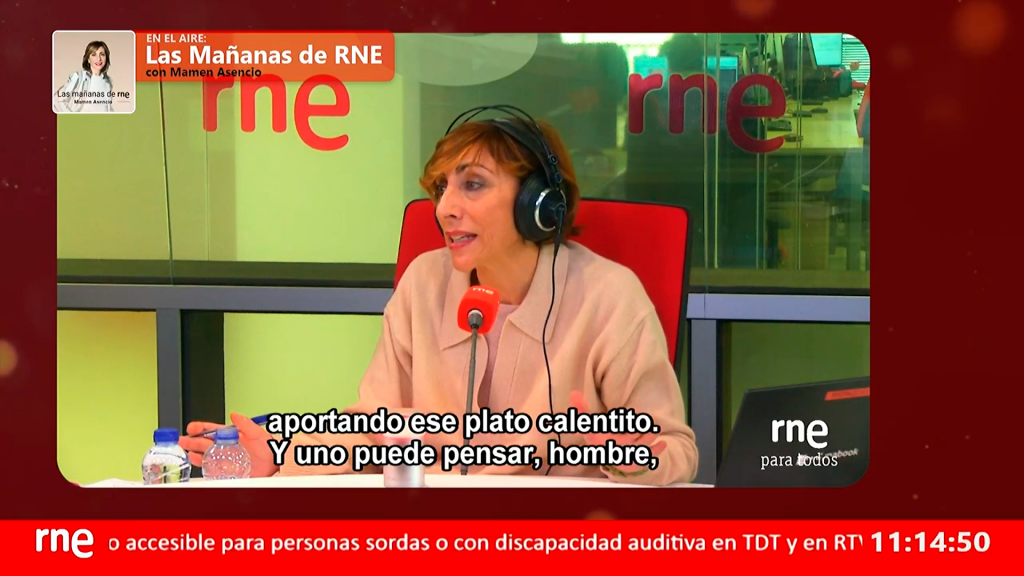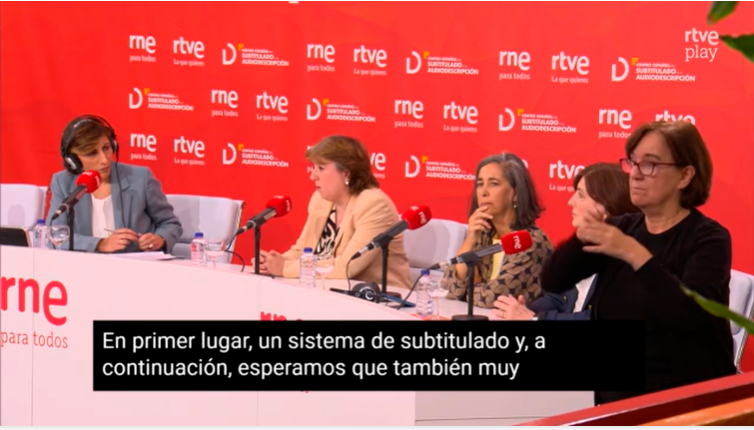Trends
Trends
NOV
13
2024
Broadcast
When the radio is visible
Spanish National Radio (Radio Nacional de España – RNE) brings radio to people with hearing disabilities using DTT
For a century, radio has connected millions of people around the world with news, music, culture and entertainment. However, this popular medium has remained out of reach for the 1.25 million deaf or hearing-impaired people in Spain for years, according to the Spanish National Statistics Office.
However, a pioneering initiative by RNE is about to correct this historic disadvantage.
The public radio station has launched a test broadcast of its programmes via DTT, with live subtitles and live images from the studios. The project, called “RNE for all”, aims to make radio accessible to people with hearing disabilities. “For us, this pilot represents a kind of miracle, allowing deaf people to hear,” says Ángel García Castillejo, Director of Audiovisual Policies, Public and International Service at Spanish national broadcaster RTVE. This is a pioneering project that has sparked the interest of major media groups worldwide, although none have yet embarked on anything similar.
Accessibility in the media has made great strides since the General Law on Audiovisual Communication, published 14 years ago, which required audiovisual products such as film and television to be adapted using subtitles, sign language and audio descriptions. However, radio was not included in these specific measures, despite the importance that the UN attaches to the universal design of accessible services. “At some point all of us either have or will have some type of disability. Deafness is something we can all experience emotionally when we are in a bar or on the metro watching the news on television” explains García Castillejo.
The idea of making radio accessible to people with hearing disabilities began to materialise with an initial test on 13 February 2023, coinciding with World Radio Day. On that occasion, RNE broadcast its programming with live subtitles, allowing many deaf people to enjoy the radio for the first time. “What was being said on the radio became visible to people with hearing disabilities, which was very moving for them,” says Javier Sánchez Pérez, Head of Strategy at RTVE’s Innovation Centre.
Although initially successful, broadcasting was limited by a lack of space in TVE multiplexes and technological restrictions. However, with the migration of DTT to a new DVB T2 standard at the end of 2025, new possibilities will open up to improve transmission quality and offer a more accessible service to the entire population. “The latest advances in automatic subtitling allow us to offer a more faithful and higher quality live broadcast, with video images from the studios of Radio Nacional” explains Sánchez Pérez, adding that the full launch is planned for spring 2025, with free access for more than 99% of the population.

The service will offer subtitles and will also include live images from the studios to allow lip reading. In a subsequent phase, a customisable space will be integrated with live sign language, which will eventually be replaced by an automated avatar, developed in collaboration with various organisations. “We are training an avatar to provide an even more accessible service in the future” comments Sánchez Pérez.
The “RNE for all” project involves input by key companies such as Cellnex, which manages the transmission of television and radio signals in Spain. “Working together to make radio accessible to hearing impaired people further strengthens our commitment to diversity and inclusion,” says Alfonso Álvarez, CEO of Cellnex Spain. “I myself am the father of a profoundly bilaterally deaf child, so this project is a double source of pride for me.”
The Spanish Centre for Subtitling and Audio Description (CESyA), at Carlos III University, is also involved, helping to improve the quality of subtitling, which comprises two layers: one is linguistic and the other adjusts the level of precision to what is happening in real time. “This is complex subtitling that requires constant training to achieve the desired precision” explains García Castillejo, Director of Audiovisual Policies, Public Service and International Affairs at RTVE.
This effort is just the start of RTVE’s ambition to be more inclusive. García Castillejo says the network is starting work on a new project to make audiovisual content accessible to people with cognitive disabilities. The idea is to create a version of the well-known “easy reading”, a format adapted for people with understanding difficulties but applied to the audiovisual world. “We want to truly realise the constitutional right to communication for all” concludes García Castillejo, underlining RTVE’s commitment to inclusion and accessibility across all of its services.



















